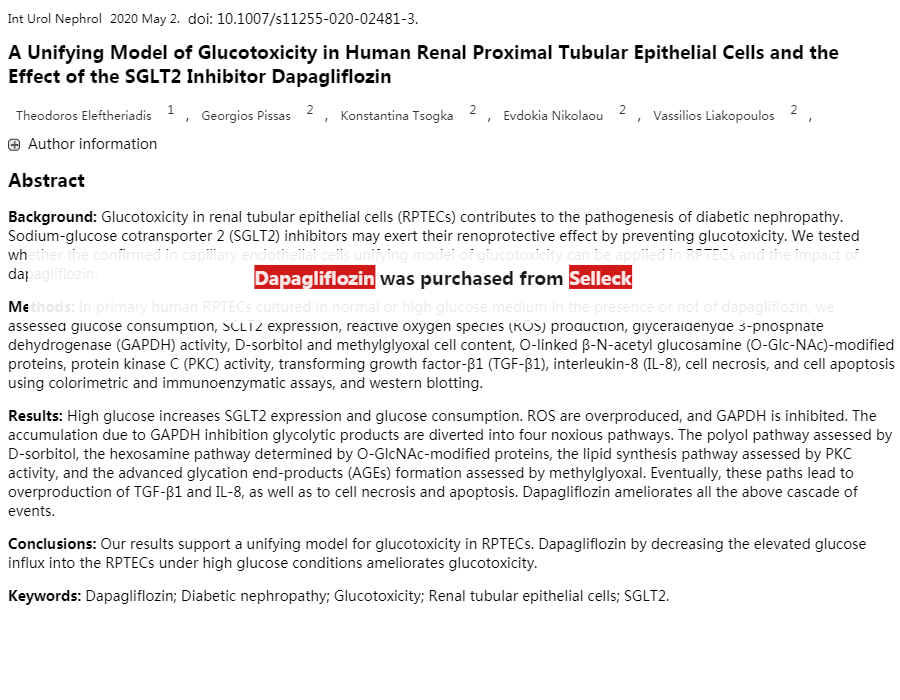
Hypoglycemia: FARXIGA can increase the risk of hypoglycemia when coadministered with insulin and insulin secretagogues.Evaluate for signs and symptoms of UTIs and treat promptly Urosepsis and Pyelonephritis: SGLT2 inhibitors increase the risk for urinary tract infections (UTIs) and serious UTIs have been reported with FARXIGA.After initiating therapy, monitor for signs and symptoms of hypotension and renal function Before initiating FARXIGA in these patients, assess volume status and renal function. Patients with impaired renal function (eGFR less than 60 mL/min/1.73 m 2), elderly patients, or patients on loop diuretics may be at increased risk for volume depletion or hypotension. Acute kidney injury requiring hospitalization and dialysis has been reported in patients with type 2 diabetes receiving SGLT2 inhibitors, including FARXIGA. Volume Depletion: FARXIGA can cause intravascular volume depletion which may manifest as symptomatic hypotension or acute transient changes in creatinine.Patients on FARXIGA may require monitoring and temporary discontinuation in situations known to predispose to ketoacidosis Before initiating FARXIGA, consider risk factors for ketoacidosis. If suspected, discontinue FARXIGA, evaluate and treat promptly. Assess patients who present with signs and symptoms of metabolic acidosis for ketoacidosis, regardless of blood glucose level. In placebo-controlled trials of patients with type 1 diabetes, the risk of ketoacidosis was increased in patients who received SGLT2 inhibitors compared to patients who received placebo. Ketoacidosis in Diabetes Mellitus has been reported in patients with type 1 and type 2 diabetes receiving FARXIGA.Prior serious hypersensitivity reaction to FARXIGA.
#DECLARE TRIAL DAPAGLIFLOZIN TRIAL#
6ĪE=adverse event ARR=absolute risk reduction CKD=chronic kidney disease CV=cardiovascular CVOT=cardiovascular outcomes trial DAPA-HF=Dapagliflozin And Prevention of Adverse outcomes in Heart Failure DECLARE=Dapagliflozin Effect on Cardiovascular Events eCVD=established cardiovascular disease HFrEF=heart failure with reduced ejection fraction hHF=hospitalization for heart failure HR=hazard ratio MACE=major adverse cardiovascular events MI=myocardial infarction RRR=relative risk reduction SGLT2i=sodium-glucose cotransporter 2 inhibitor T2D=type 2 diabetes. §Secondary prevention defined as eCVD (clinically evident ischemic heart disease, ischemic cerebrovascular disease, or peripheral arterial disease). ‡Primary prevention defined as multiple CV risk factors (age ≥55 years in men or ≥60 years in women and at least 1 of the following: dyslipidemia, hypertension, or current tobacco use) and without a history of a CV event at baseline. †Patients included were ≥40 years of age. *DECLARE was a randomized, double-blind, placebo-controlled, multicenter trial designed to evaluate the effect of FARXIGA 10 mg compared with placebo on CV outcomes in adults with T2D and either multiple CV risk factors or eCVD. ‡Hospitalization for heart failure indication is not limited by diabetic nephropathy or the presence of macroalbuminuria. †Data represented as event rates over a median follow-up of 4.2 years. *Primary prevention defined as multiple CV risk factors (age ≥55 years in men or ≥60 years in women and at least 1 of the following: dyslipidemia, hypertension, or current tobacco use) and without a history of a CV event at baseline.

FARXIGA is not indicated to reduce the risk of MACE 6


 0 kommentar(er)
0 kommentar(er)
